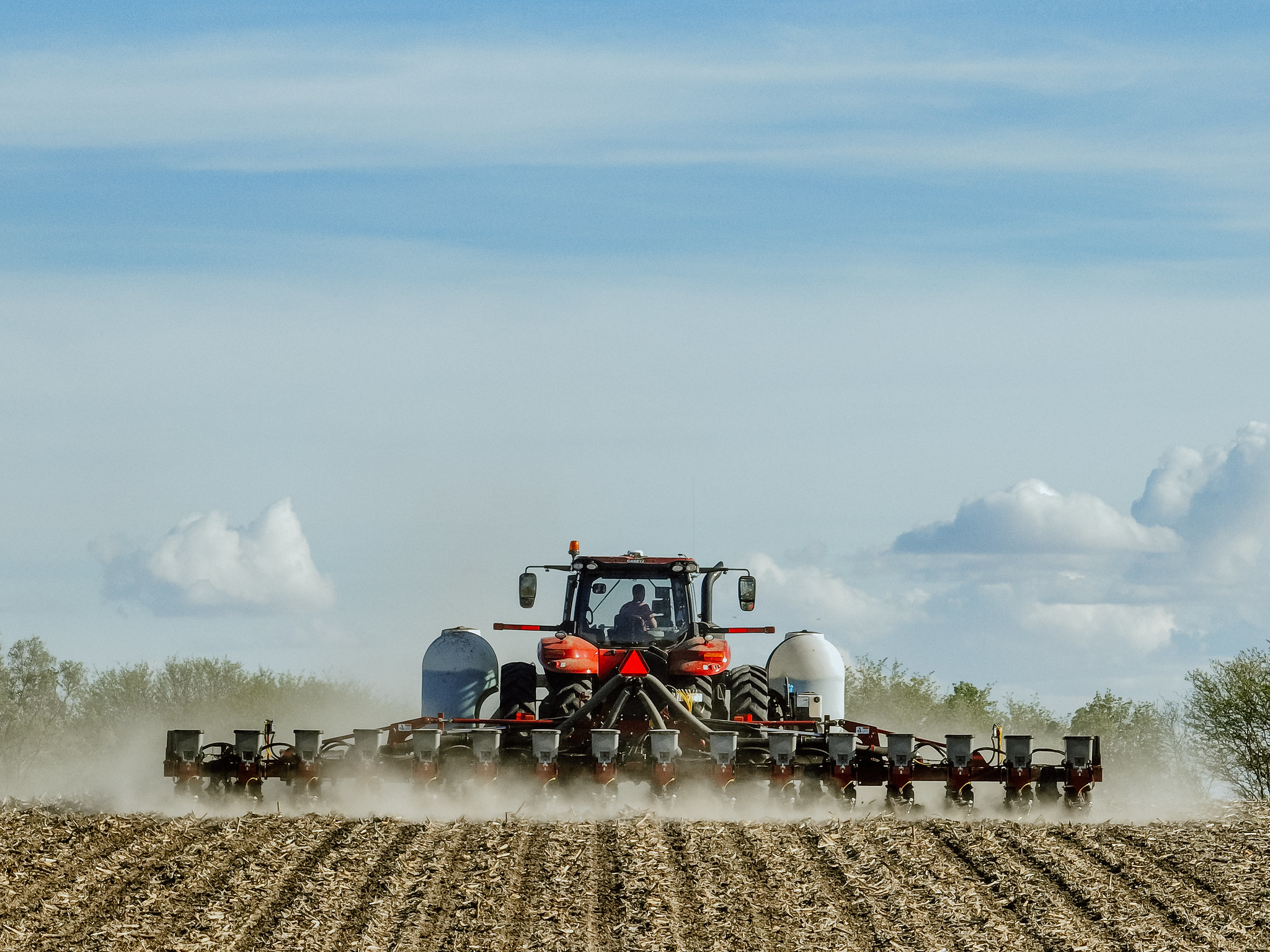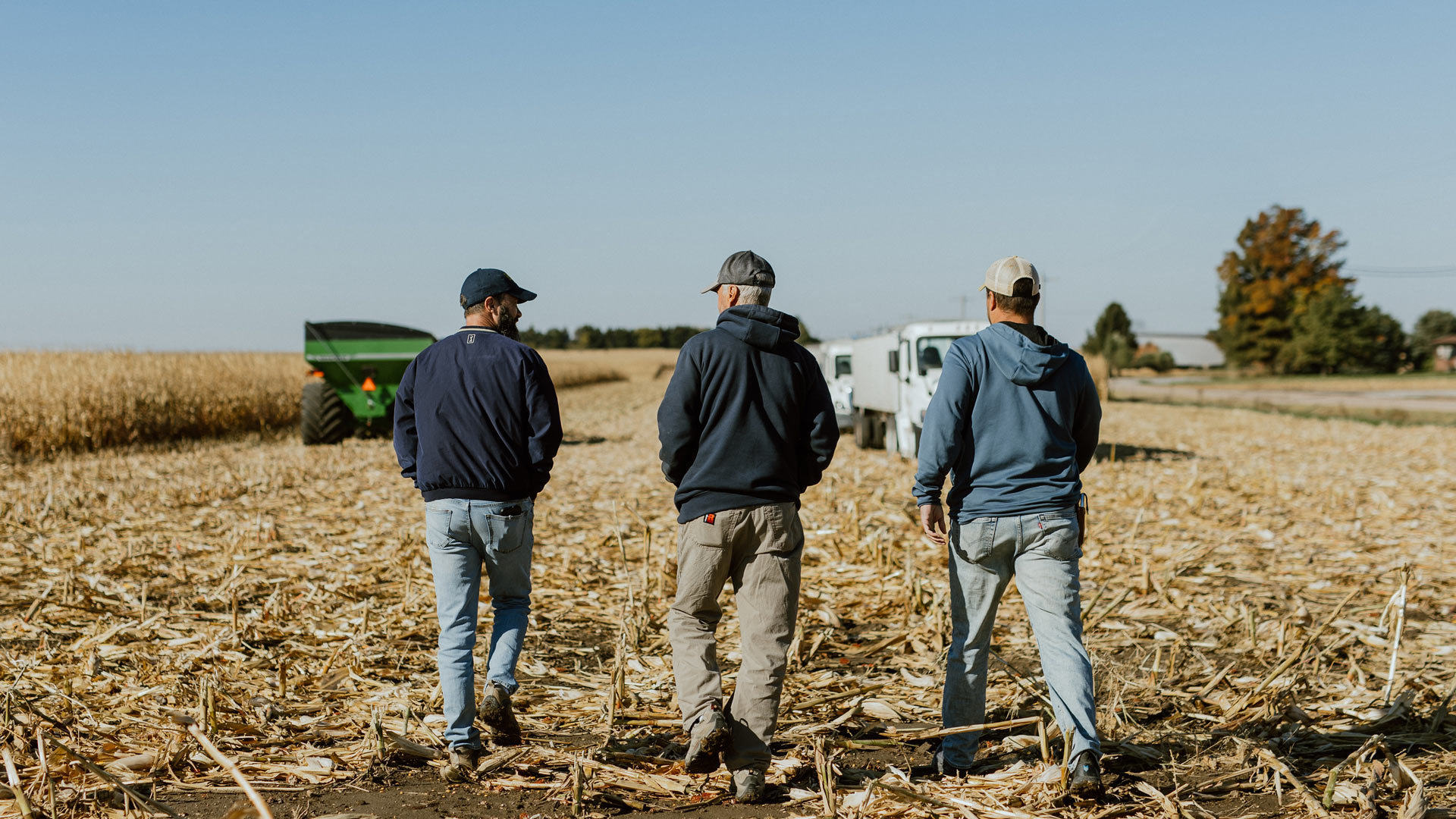In fields and research facilities across Nebraska, plant geneticists are working hard to develop hardier, higher-yielding varieties of corn. This behind-the-scenes work involves many hours in the field and in the lab, collecting and analyzing data that may someday be critical for meeting global demand for corn and other crops and increasing profitability for farmers.
In Nebraska, many future plant geneticists earn their degrees doing research with Dr. James Schnable, a professor of agronomy and horticulture at the University of Nebraska-Lincoln. Schnable also serves as the Nebraska Corn Checkoff Presidential Chair.
A second-generation plant geneticist, Schnable spoke with the Nebraska Corn Board to explain what a plant geneticist does, why the work of all plant geneticists is so important and how their research benefits farmers.
What Is a Crop Geneticist?
A plant geneticist studies the genes of plants. A crop geneticist is a plant geneticist who studies the genetic makeup of corn and other crops. By identifying which genes influence specific characteristics in corn, such as drought tolerance or resistance to certain pests, geneticists can develop better or more specialized seed varieties to help improve farmers’ yields.
“I try and look at the corn genome, which is as big and complex as the human genome, and figure out what each of the 30,000 to 40,000 genes in that genome does,” Schnable explained. “In parallel with that, I try to use genetic information on different varieties of corn to help figure out how to make better and more resource-use efficient versions of corn plants by figuring out which parents to cross together to make new corn varieties.”
Key Tasks of a Crop Geneticist Who Studies Corn and Other Crops
There are two main tasks Schnable and his students perform. First, they conduct research by growing corn and other crops at research plots in Nebraska and in coordination with researchers in other regions. Second, they analyze data from the research plots to see how well varieties of corn performed.
The team analyzes data such as plant height, number of leaves, metabolites present in the leaves and how well photosynthesis is performing in the leaves.
“The university has a really good network of research sites all across the state,” Schnable said. “In a typical year, I’m probably getting data from Scottsbluff, Sydney, North Platte, Brule, Mead and here in Lincoln.”
Why Collaboration Is Important to the Study of Crop Genetics
Partnering with other universities and research teams around the world is crucial to the study of corn genetics. Many factors influence the health, yield and quality of corn and other crops — climate, precipitation and soil characteristics being just a few. Collaborating with researchers in other areas provides critical data on how corn varieties perform under different conditions.
In Nebraska, Schnable’s team works with staff stationed at research and extension centers in North Platte and Scottsbluff. Outside Nebraska, other collaborators on crop genetic improvement projects include professors at other universities as well as the USDA.
Current research partners for Schnable include Iowa State University, University of Missouri, Kansas State University, Michigan State University and Alabama A&M. Schnable’s team also collaborates on research with university research partners in Brazil, China, Poland and Turkey.
“One of the big projects we just wrapped up was with Iowa State University. We were growing varieties of corn all across the state of Nebraska. They extended that all the way to the Mississippi River on the Iowa-Illinois border,” Schnable said. “It’s a really cool experiment. We’re still learning a lot from it. I think we’ll be learning from the data we collected for years to come.
In addition to the ability to see how corn varieties perform in different regions, these partnerships also allow collaborators to share technology for collecting and analyzing data.
Why Is the Work of Crop Geneticists So Important to Corn Farming?
Knowing how varieties of corn perform in different environments is vital information for farmers, because it helps them select a variety of corn best suited for the growing conditions on their farm.
For example, Schnable said farmers growing corn in North Dakota might choose an extremely fast-maturing corn variety able to complete its growth cycle during the area’s short growing season. However, he said research may show the same variety would be ill-suited for the longer growing season in Nebraska. Armed with that information, the Nebraska corn farmer would be better off choosing a slower-maturing corn variety with a higher yield.
In addition to studying factors like growth speed and yields, plant geneticists like Schnable and his team help develop corn seed varieties that are resistant to drought, certain pests and diseases — providing farmers a tool to overcome adverse conditions and increase their yields.
“The study of crop breeding and genetics is a key reason corn yields are six to seven times higher now than in the 1940s, and consistently increase by about two bushels per year,” Schnable said.
“The reason for that is because crop geneticists are constantly working to develop better and better and more productive hybrids. It’s the reason we’ve largely staved off global famines for the last half century,” Schnable said. “It’s also the reason farming remains a profitable and viable enterprise in the U.S. today.”
Nebraska Corn Board Supports the Study of Crop Genetics
Two years ago, Schnable was appointed as the Nebraska Corn Checkoff Presidential Chair at the University of Nebraska-Lincoln. Funded by a research endowment supported by the Nebraska Corn Board, the position focuses on creating new demand for corn and also improving the resilience and efficiency of corn plants.
Both aspects of the research have important benefits to corn farmers.
“If you can grow more corn with less nitrogen, that’s a win for growers, that’s a win for the environment and it’s actually a win for demand given a lot of current policy where there is more value to corn produced in a way that released less carbon dioxide,” Schnable said.
How Has the Role of Crop Geneticists Changed Over Time?
“While crop geneticists still conduct research and study the genes of corn and other plants, the way they spend their time on the job has changed over the years. The biggest difference is how much of the job is spent outside of the field working with and analyzing data,” Schnable said.
When Schnable was a child, he spent a lot of time in the fields with his father, who also is a plant geneticist. In those days, data was recorded in a notebook.
“The students who come into my lab today, they probably spend a year just learning programming and statistical models before they can set foot in a cornfield,” he said. “So, it’s been a big shift.”
How to Become a Plant Geneticist
There are two main pathways for those interested in learning how to become a plant geneticist.
The most common way to become a plant geneticist is through university study. In Schnable’s program at the University of Nebraska-Lincoln, students typically earn their PhD in agronomy and prepare for their careers in agriculture with four to six years of research in an apprenticeship-type situation.
The second, less common route, is to work at a plant-breeding organization after earning a bachelor’s or high school degree. In the case of future plant geneticists, this might include working at a specialized corn-breeding operation like one focused on developing lines of popcorn.
“They just learn by doing. Some of the most talented plant breeders I have met are people who’ve come up through that second path,” Schnable said. “But I think a lot of people start down that second path and most of them get discouraged or move onto other things. So, the people who push through to the point where they’re running a breeding program just from continuing to learn and move up are really exceptional individuals.”
The Future Study of Crop Genetics
Going forward, Schnable said it will be important to continue to spark interest in students pursuing the study of crop breeding and genetics. From improving resistance to pests to increasing sustainability by helping farmers grow corn with less water and other resources, plant geneticists play a key role in improving corn yields and quality around the world.
That’s why continued research by plant geneticists—including the many who got their start in Nebraska studying in Schnable’s program at the University of Nebraska-Lincoln—is so crucial to meeting global demand for corn as a food, livestock feed and fuel today and in the future.




